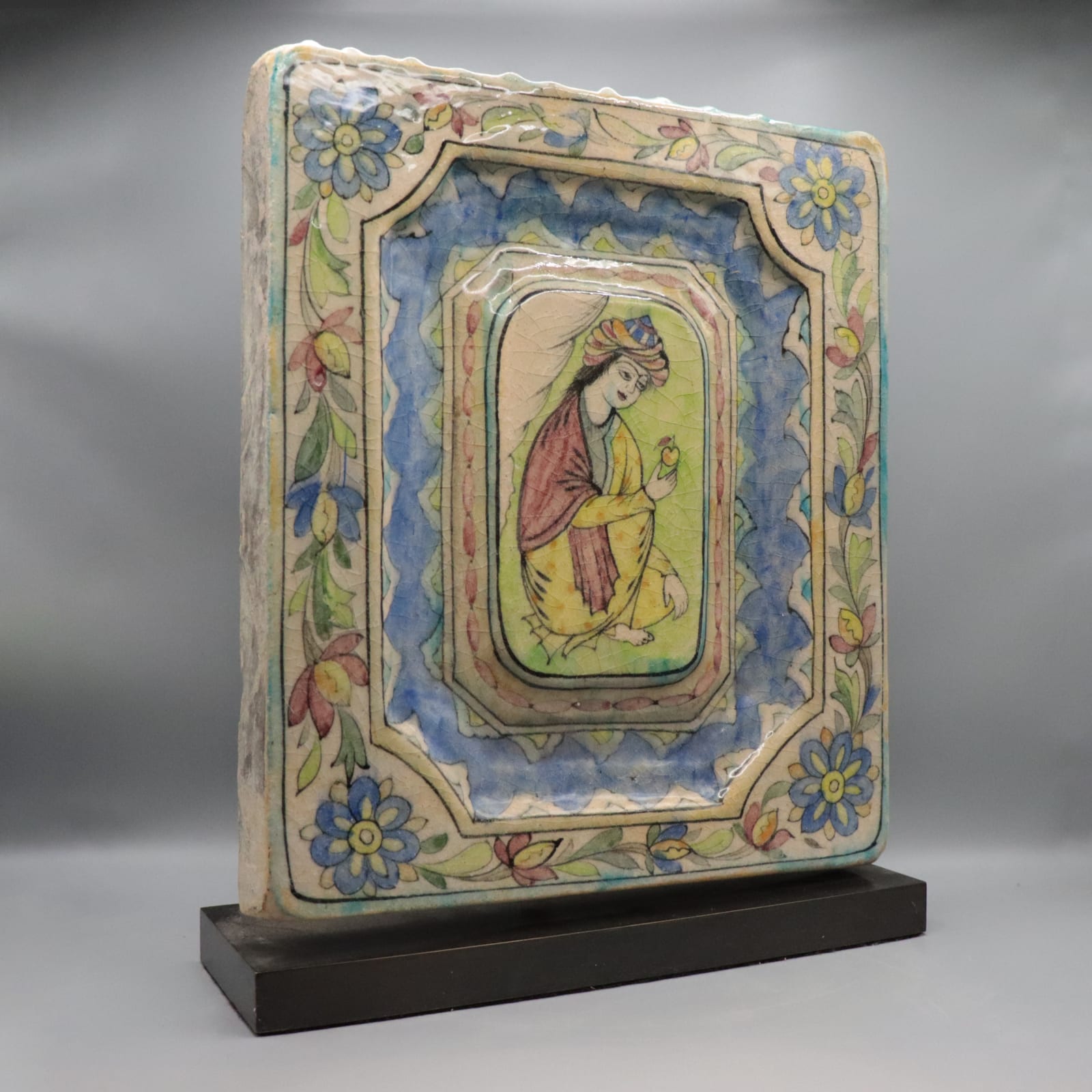Qajar Rectangular Glazed Tile Depicting a Woman, 18th century CE
Terracotta
42 x 35 x 11 cm
16 1/2 x 13 3/4 x 4 3/8 in
dimensions given inclusive of mounting
16 1/2 x 13 3/4 x 4 3/8 in
dimensions given inclusive of mounting
LI.3251
The origins of the Safavid Dynasty can be traced back to the Safaviyeh Sufi order founded in the early 14th century in the city of Ardabil. From this base in...
The origins of the Safavid Dynasty can be traced back to the Safaviyeh Sufi order founded in the early 14th century in the city of Ardabil. From this base in northwestern Iran, the Safavids would go on to become the first native Persian dynasty to exert control over all of Iran since the fall of the Sassanids. Safavid art was strongly influenced by Turkmen culture as well as Chinese, Ottoman and Western cultures, and it went on to strongly influence the artistic expressions of the later Qajar period. Developments were made in the fields of miniature painting and tile making.
The Qajar dynasty was an Iranian royal dynasty of Turkmen tribal origin, specifically from the Qajar tribe, which ruled then Persia, nowadays Islamic Republic of Iran, from 1785 to 1925. The state ruled by the Qajar dynasty was officially known as the Sublime State of Iran.
Although the Qajar family took full control of Iran in 1794 and re-asserted Iranian sovereignty over large parts of the Caucasus, they permanently lost many of Iran's integral areas to the Russia over the course of the 19th century, comprising modern-day Georgia, Dagestan, Azerbaijan, and Armenia.
The occupation of Iran during World War I (1914-18) by Russian, British, and Ottoman troops was a blow from which the Qajar dynasty never effectively recovered. With a coup d'état in February 1921, Reza Khan who afterwards ruled as Reza Shah Pahlavi (1925-41) became the preeminent political personality in Iran and the last Qajar sovereign was formally deposed in October 1925 while he was absent in Europe, while the National Iranian Assembly declared the rule of the Qajar dynasty to be terminated.
The Qajar dynasty was an Iranian royal dynasty of Turkmen tribal origin, specifically from the Qajar tribe, which ruled then Persia, nowadays Islamic Republic of Iran, from 1785 to 1925. The state ruled by the Qajar dynasty was officially known as the Sublime State of Iran.
Although the Qajar family took full control of Iran in 1794 and re-asserted Iranian sovereignty over large parts of the Caucasus, they permanently lost many of Iran's integral areas to the Russia over the course of the 19th century, comprising modern-day Georgia, Dagestan, Azerbaijan, and Armenia.
The occupation of Iran during World War I (1914-18) by Russian, British, and Ottoman troops was a blow from which the Qajar dynasty never effectively recovered. With a coup d'état in February 1921, Reza Khan who afterwards ruled as Reza Shah Pahlavi (1925-41) became the preeminent political personality in Iran and the last Qajar sovereign was formally deposed in October 1925 while he was absent in Europe, while the National Iranian Assembly declared the rule of the Qajar dynasty to be terminated.
